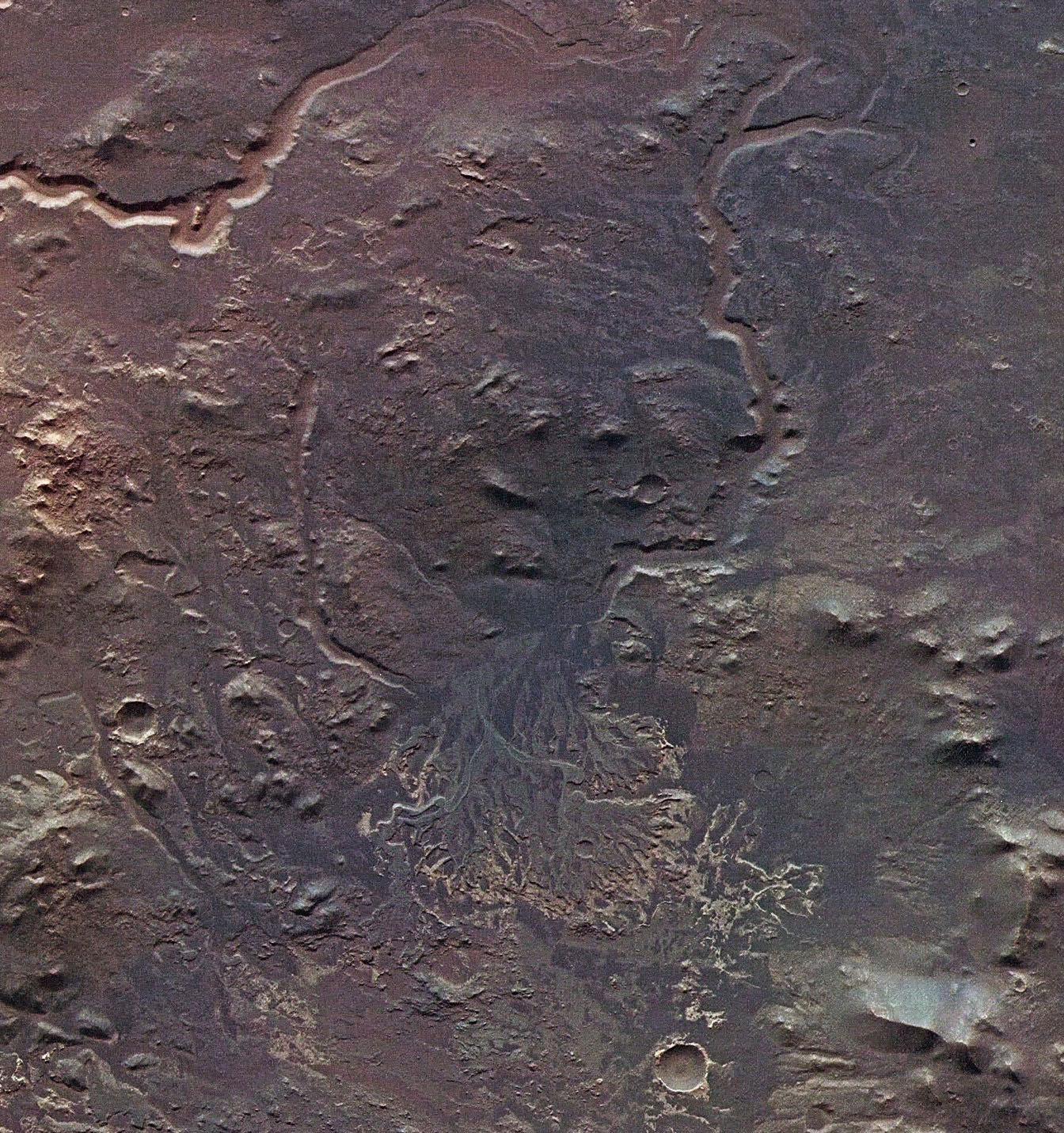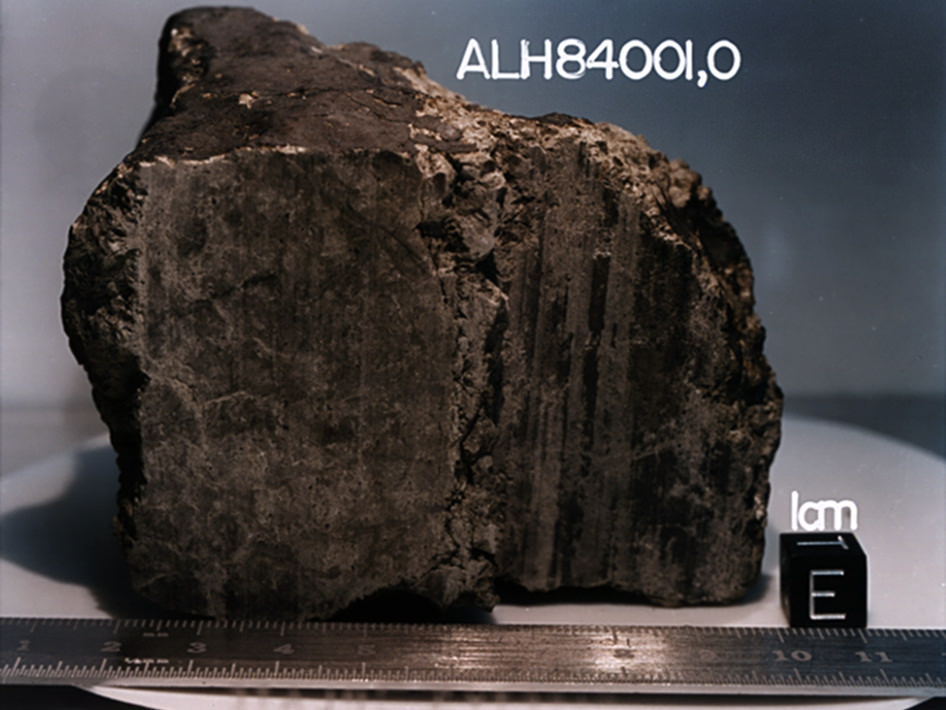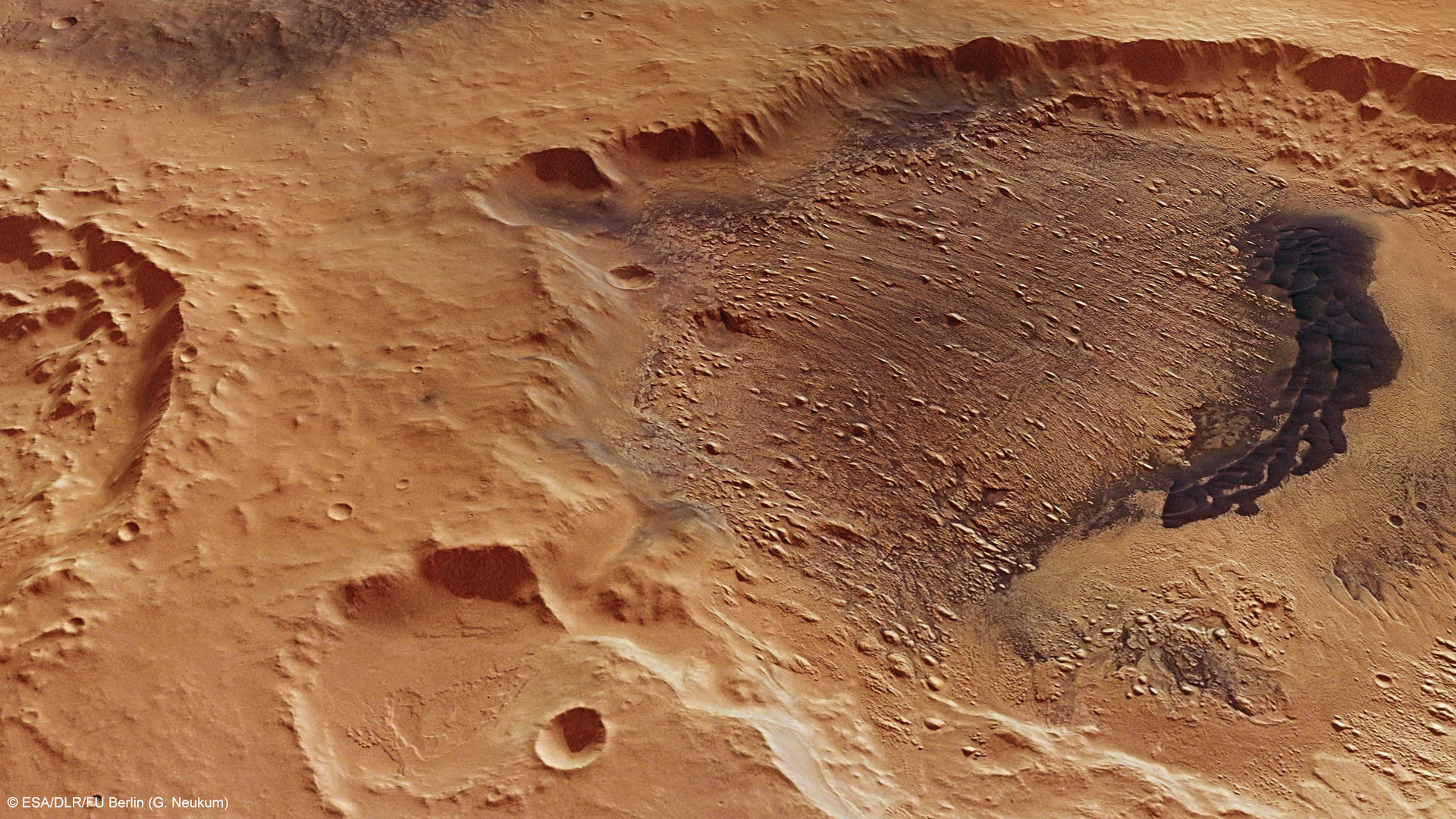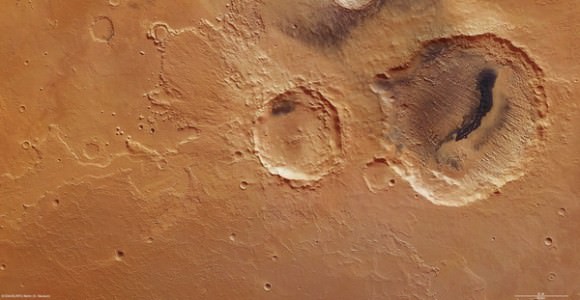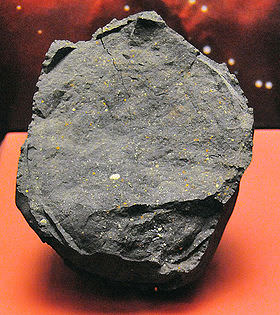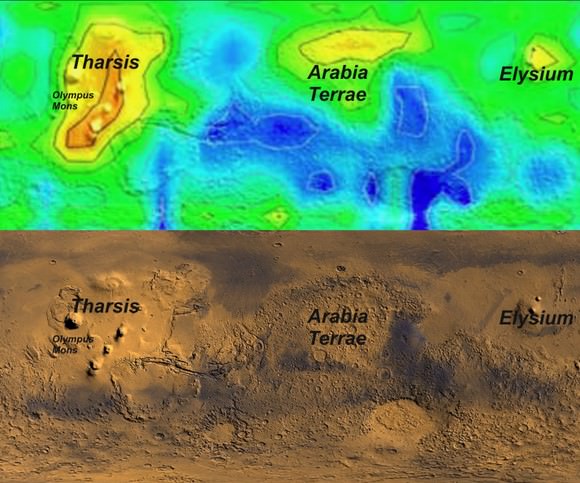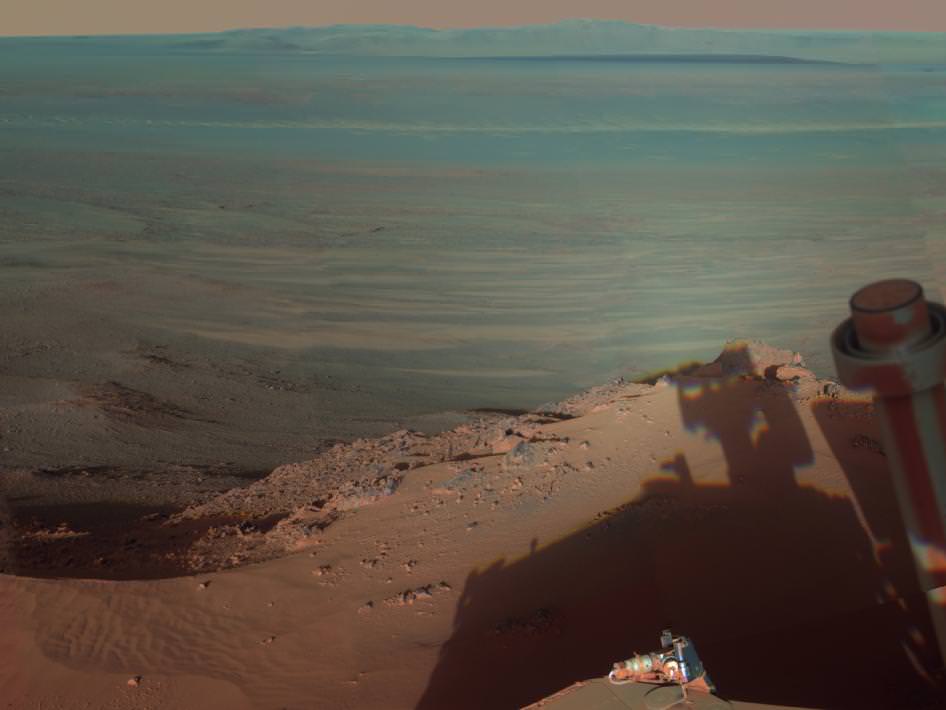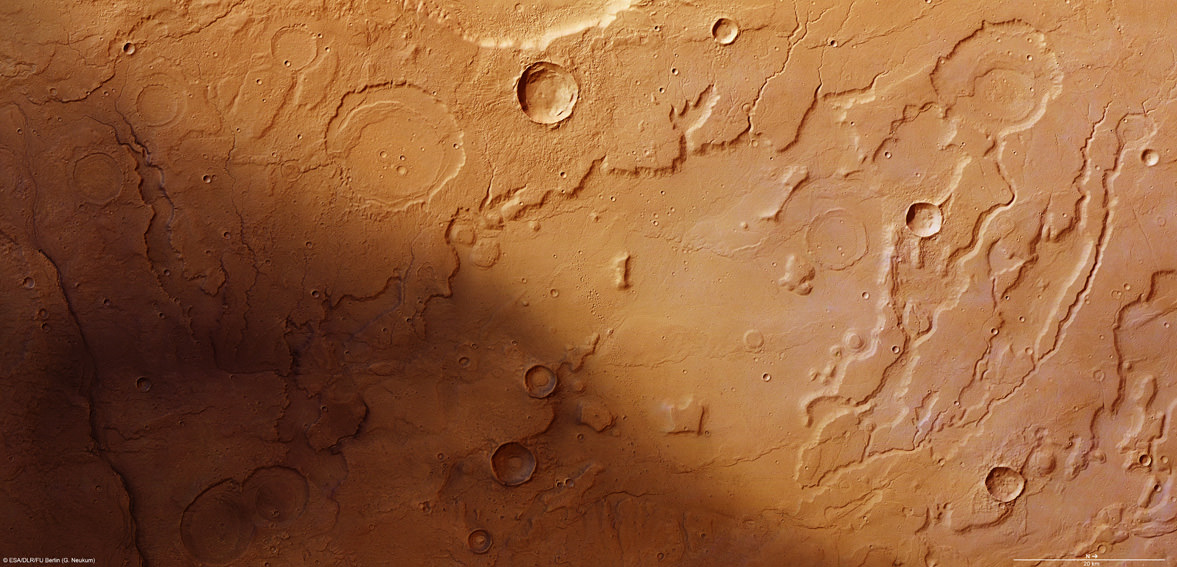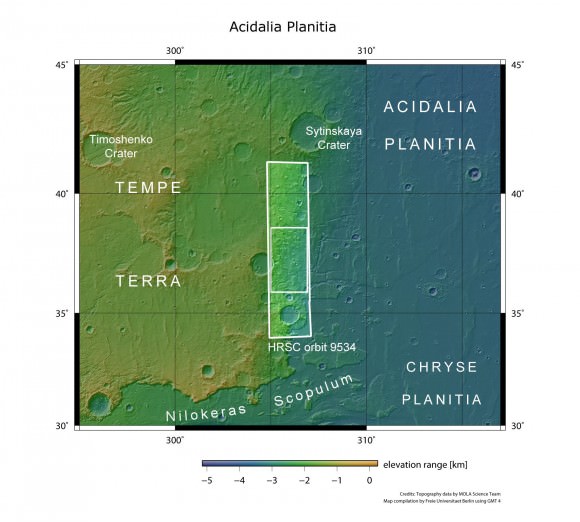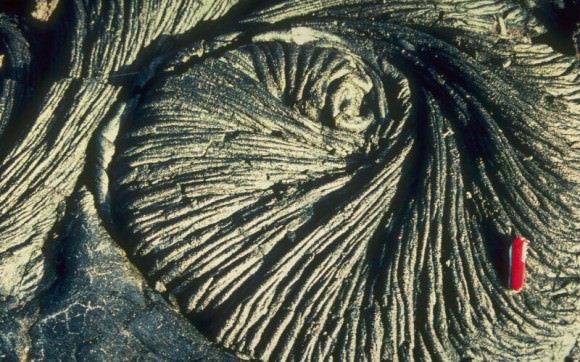Researchers from the Carnegie Institution have found that water is present in surprisingly Earthlike amounts within Mars’ mantle, based on studies of meteorites that originate from the Red Planet. The findings offer insight as to how Martian water may have once made its way to the planet’s surface, as well as what may lie within other terrestrial worlds.
Earth has water on its surface (obviously) and also within its crust and mantle. The water content of Earth’s upper mantle — the layer just below the crust — is between 50 and 300 ppm (parts per million). This number corresponds to what the research team has identified within the mantle of Mars, based on studies of two chunks of rock — called shergottites — that were blasted off Mars during an impact event 2.5 million years ago.
“We analyzed two meteorites that had very different processing histories,” said Erik Hauri, the analysis team’s lead investigator from the Carnegie Institute . “One had undergone considerable mixing with other elements during its formation, while the other had not. We analyzed the water content of the mineral apatite and found there was little difference between the two even though the chemistry of trace elements was markedly different. The results suggest that water was incorporated during the formation of Mars and that the planet was able to store water in its interior during the planet’s differentiation.”
The water stored within Mars’ mantle may have made its way to the surface through volcanic activity, the researchers suggest, creating environments that were conducive to the development of life.
Like Earth, Mars may have gotten its water from elements available in the neighborhood of the inner Solar System during its development. Although Earth has retained its surface water while that on Mars got lost or frozen, both planets appear to have about the same relative amounts tucked away inside… and this could also be the case for other rocky worlds.
“Not only does this study explain how Mars got its water, it provides a mechanism for hydrogen storage in all the terrestrial planets at the time of their formation,” said former Carnegie postdoctoral scientist Francis McCubbin, who led the study.
The team’s research is published in the July edition of the journal Geology. Read more on the Carnegie Institution for Science’s site here.
Image: The remains of what appears to be a river delta within Eberswalde crater on Mars, imaged by ESA’s Mars Express. Credit: ESA/DLR/FU Berlin (G. Neukum).

